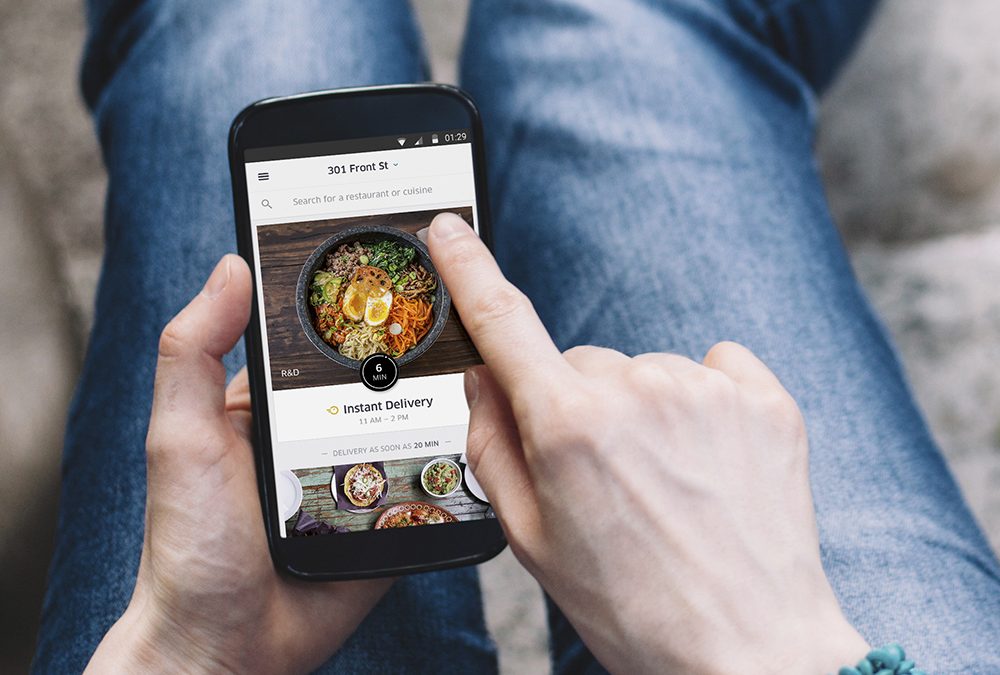By Laura Michaels
Companies everywhere are claiming they’re the Uber of their particular industry—from flower delivery to laundry, and even medical marijuana. So when the real Uber decides it’s going beyond its ride-hailing app to other on-demand global markets, people notice.
Could there soon be an Uber for everything? Jason Droege, whose actual title is Head of UberEverything, confirms the company is in a unique position to leverage its extensive logistics network as its UberEats and UberRush delivery services expand to new markets.
“We saw the rise from a consumer demand standpoint and it’s a business model that makes sense for everybody, the customers, the restaurants and us,” said Droege of UberEats, the on-demand food delivery service that’s now in 28 cities across three continents. “We want to help restaurants leverage the kitchen capacity that they have and grow their business.”
Control is what restaurants get when they use UberEats for delivery, Droege pointed out.
“We put restaurants first,” he said. “How that breaks down is every restaurant that’s on UberEats has agreed to be on UberEats. Every menu for every restaurant is created in partnership with the restaurant.”
Entering the food delivery space made sense for Uber, Droege said, despite the landscape being crowded with the likes of Postmates, GrubHub, Doordash and others. There is a rise in consumer demand, yes, but Droege said Uber takes a higher-level view: “Everything we do should benefit the city, it should celebrate the cities … it should also enable people to engage with the best of their city in a more frictionless way.”
That’s where Uber’s logistical prowess comes in. While on the surface many of the delivery services look the same, Uber’s investment in technology and sheer number of drivers allows UberEats to boast faster delivery times. Fourteen minutes is the average time globally from when UberEats drivers get food from the restaurant to the time the consumer receives it.
And as Droege explained it, the most important thing in delivering a quality experience for the consumer and restaurant is “having that driver arrive at exactly the right moment” to ensure the shortest drive time for that particular meal.
“From a food integrity standpoint, I think that really helps,” he continued, noting that’s a key concern for many restaurant owners considering delivery.
Since its launch in 2015, UberEats has continued its expansion; most recently the company announced plans to begin delivering in Tokyo and said it has more locations in its sights as it identifies cities where the restaurants are mutually excited.
“It’s not a secret that when Uber gets passionate about a business, it invests heavily in it, to do it right, to make true change how we can and partner with the communities that we’re going into,” said Droege.
“If we’re representing the flavor of that city and really celebrating that and giving people access where they didn’t have access before to all the best things, rather than just being physically close to it, that’s when we know we’re kinda onto something.”
UberEats takes a “food first, food only” approach and works with its restaurant partners to ensure delivery is an extension of the restaurant’s brand. That means having local UberEats teams on the ground in each city that work with the restaurants on everything from professional food photography to menu selection and even packaging. UberEats drivers get additional training and have access to additional resources covering topics such as interacting with customers.
A rating system similar to what Uber uses for its rider app allows customers to rate their UberEats driver, plus each menu item they ordered. “That feedback is crucial,” said Droege, “people want to be able to rate the whole experience.”


